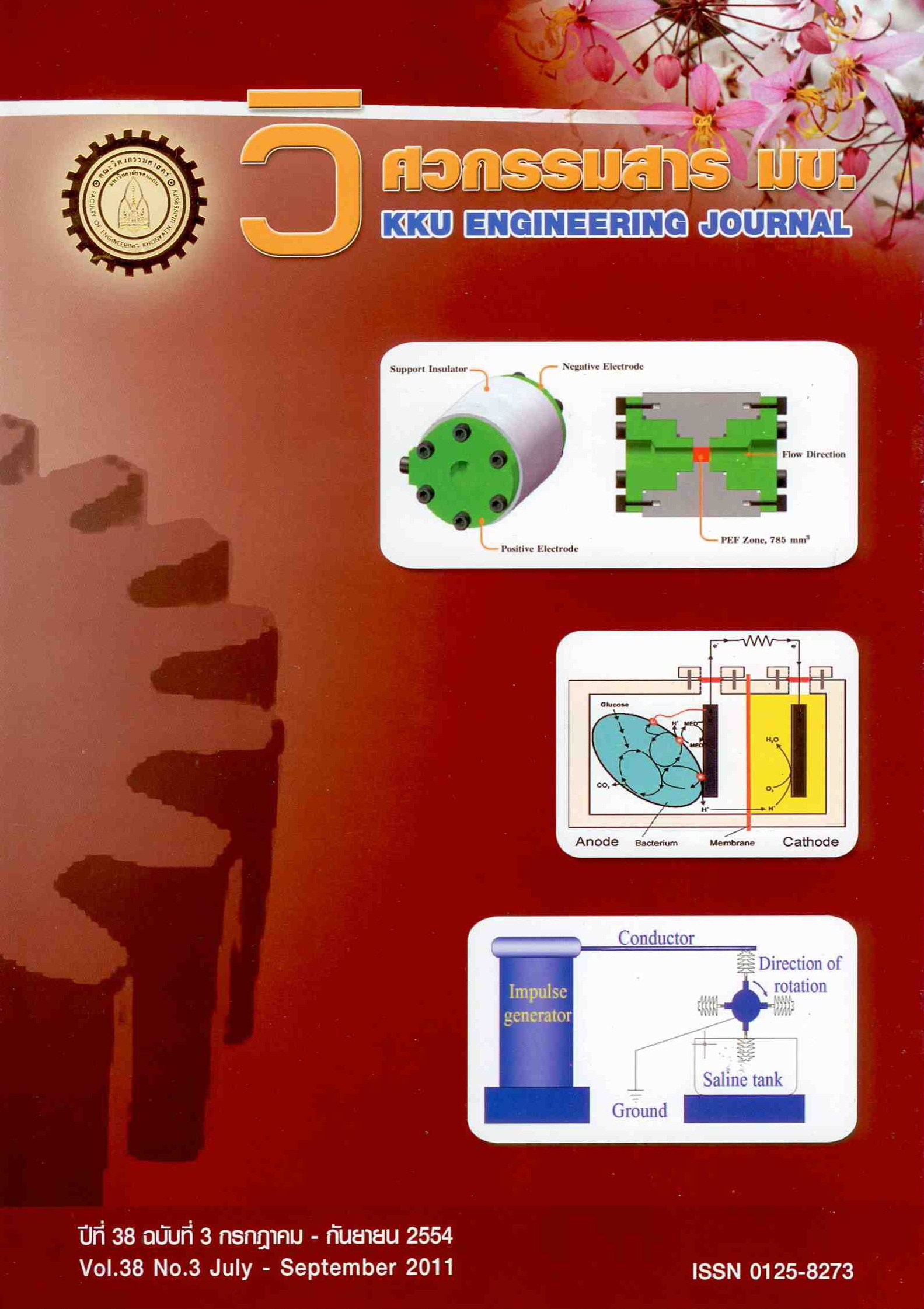Write current optimization for magnetic recording system
Main Article Content
Abstract
In this paper, we propose a method of write current optimization based on the contour graph. The
contour graph is plotted from bit error rate (BER) which obtaining from running the full write current
combination. In optimization process, we consider the write current effect to the system performance such as
protrusion level of heads and adjacent-track interference (ATI) effect from recording head following upon the
write current amplitude variation and the write current duration is considered. Increasing the write current
overshoot causes the transition shift or inter-symbol interference (ISI). Before selecting the write current, the
optimization is squeezed measure the performance of each. In the proposed method, first, we run the full
combination of the write current including write current amplitude, write current overshoot and write current
duration. Then we plot the contour graph between the write current amplitude and the write current duration,
and select the best write current overshoot that gives the widest BER area. Next, we select three upward edge
points of the write current duration. On the contrary, we plot the contour graph between the write current
amplitude and the write current overshoot, and select the best write current duration that gives the widest BER
area, select three upward edge points of the write current overshoot. After that, we select eight points of the
write current amplitude, and then we get 24 sets of the write current. Finally, we select eight sets of the best
write triplet. We can deduce from the experimental result that, the proposed method gives better performance
than the baseline method. Moreover, we observe that the fixed write current duration yields higher
performance than the fixed write current overshoot. However, in the unsqueezed mode, the result is in contrast
because the write current overshoot affects to the system performance more than the write current duration.
contour graph is plotted from bit error rate (BER) which obtaining from running the full write current
combination. In optimization process, we consider the write current effect to the system performance such as
protrusion level of heads and adjacent-track interference (ATI) effect from recording head following upon the
write current amplitude variation and the write current duration is considered. Increasing the write current
overshoot causes the transition shift or inter-symbol interference (ISI). Before selecting the write current, the
optimization is squeezed measure the performance of each. In the proposed method, first, we run the full
combination of the write current including write current amplitude, write current overshoot and write current
duration. Then we plot the contour graph between the write current amplitude and the write current duration,
and select the best write current overshoot that gives the widest BER area. Next, we select three upward edge
points of the write current duration. On the contrary, we plot the contour graph between the write current
amplitude and the write current overshoot, and select the best write current duration that gives the widest BER
area, select three upward edge points of the write current overshoot. After that, we select eight points of the
write current amplitude, and then we get 24 sets of the write current. Finally, we select eight sets of the best
write triplet. We can deduce from the experimental result that, the proposed method gives better performance
than the baseline method. Moreover, we observe that the fixed write current duration yields higher
performance than the fixed write current overshoot. However, in the unsqueezed mode, the result is in contrast
because the write current overshoot affects to the system performance more than the write current duration.
Article Details
How to Cite
Pliamsup, P., Supnithi, P., & Senanan, K. (2013). Write current optimization for magnetic recording system. Engineering and Applied Science Research, 38(3), 233–242. retrieved from https://ph01.tci-thaijo.org/index.php/easr/article/view/7717
Issue
Section
ORIGINAL RESEARCH
This work is licensed under a Creative Commons Attribution-NonCommercial-NoDerivatives 4.0 International License.



